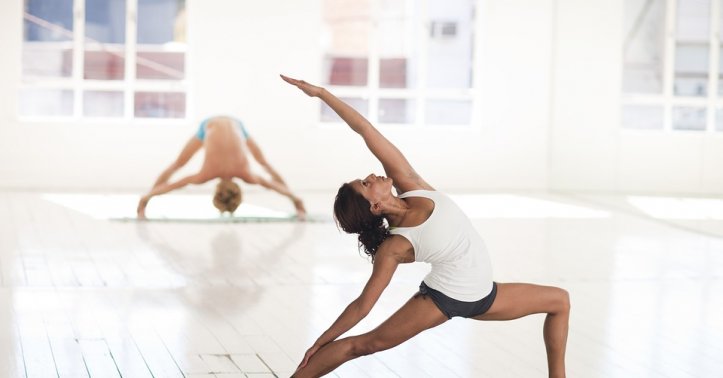
Top 3 Benefits of Effectively Practicing Yoga for Fitness and Health Goals
Yoga is not just about Asanas. As most come to yoga for fitness and health requirements, they are only interested in the technology part of yoga. The technology part of yoga refers to the techniques to get fit and healthy. However, even Asanas which are synonymous with physical postures are not just physical postures. But for a majority of yoga enthusiasts out there, it is the glamour of these postures or asanas that arouse interest in yoga. As unfortunate as that may be, Asanas themselves if understood and practiced correctly can reap benefits.
Benefits of practicing yoga for fitness and health goals from a physical perspective are as under:
1. Tones the body
Asanas involve dynamic movements that alternatively expand and contract the body. This alternate expansion and contraction help to tone the muscles of the targeted body part. This in turn helps to reduce flab in that portion of the body and thus tones and strengthens the muscles.
'Paschimotanasana'or the seated forward fold contracts the muscles of the abdominal region. The body relaxes when you release the posture. This alternate contraction and relaxation help to tone the muscles of the abdominal region.
Think about how crunches work. It applies the same principle of alternate contraction and relaxation. So the next time you practice dynamic asanas, mindfully observe what part of the body is contracting and relaxing or expanding and relaxing. This realization will help you target the specific areas of the body you want to tone and strengthen. Approaching yoga for fitness and health will prove to be more beneficial if we understand the logic behind the practice.

2. Strengthens the body
Asanas include both static and dynamic movements. While we have already seen how dynamic asanas help with toning of muscles, static asanas help with strengthening them. Static asanas basically involve staying in the posture for a prolonged period of time. Static asanas not only help in increasing strength but also stamina. This is because the body uses its own weight to bring stability which helps in retaining the posture for a prolonged period of time. This in turn helps to strengthen the body. This strength helps to increase stamina and vigor.
Hence, when you stay in 'Palakasana' or the plank pose you are strengthening your arms. And when you stay in 'Ek Padasana' or the one-legged pose you are strengthening your lower limbs - one leg at a time. Another important aspect of static postures is that it enhances your balance, focus, and concentration. It helps to achieve stability, along with adding strength and stamina to your body.

3. Enhances blood supply
Asanas involving inversions reverse the flow of blood in the body. When the body is held against gravity, it enhances the supply of blood throughout the body. This in turn has varied beneficial effects on the body. Firstly, enhanced supply of oxygenated blood ensures the effective functioning of all the organs in the body. It also means a sufficient supply of blood to the head region which in turn has multiple benefits. It relaxes the nerves, enhances facial glow, and helps to relieve headaches and insomnia. All because of the simple reason of the increased supply of oxygenated blood to that region.
So the next time you place a bottle filled with liquid upside down, minutely observe how the contents spread throughout the bottle instead of just settling at the bottom. The same thing happens when you attempt an inversion asana.
For all of you out there obsessed with attempting 'Sirsasana' or the headstand, it is important to understand that an alternate inversion asana can give us the same benefits. 'Sarvangasana' or the shoulder stand or an even easier inversion in the form of 'Viparit Karni' or legs up in the air can give you the same benefits as a headstand.
Conclusion
Whether you come to yoga for fitness and health goals or you come to enhance your personal growth, it is first important to understand what is yoga in its entirety. It is then up to the individual to choose their preference whether they want to opt for the technology part of yoga for fitness and health purpose or the philosophy part of yoga for personal growth and healing purpose. The benefits of practicing yoga are manifold. It is also important to remember that yoga provides holistic benefits to the individual as a whole. Even while practicing yoga asanas, there is an active and passive effect on the overall body and mind. Only a few benefits have been highlighted above to understand the logic of how asanas work on the body. But each asana in itself has numerous therapeutic benefits. The essential ingredient of the whole practice being mindfulness.
About the Author
 Karen Rego is a content contributor at Life Positive. She is also a trained yoga teacher and has completed her advanced teachers' training in yoga education from The Yoga Institute. She has over 14 years of practice in yoga asanas. She recently quit her corporate law career spanning 10 years to become a full-time yoga trainer.
Karen Rego is a content contributor at Life Positive. She is also a trained yoga teacher and has completed her advanced teachers' training in yoga education from The Yoga Institute. She has over 14 years of practice in yoga asanas. She recently quit her corporate law career spanning 10 years to become a full-time yoga trainer.









